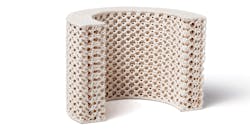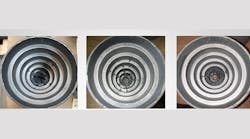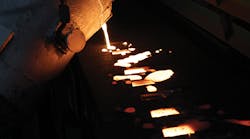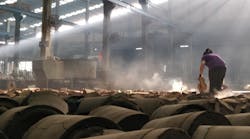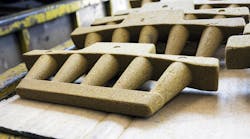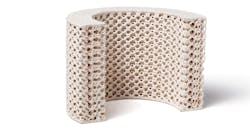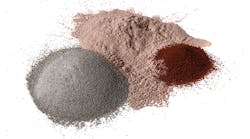Q: I am looking for a sand additive to improve the finished quality of our castings, and I understand there are many different additives to choose from. What are the differences and what important factors should I consider when selecting an additive?
A: You are correct, there are many different types of sand additives to choose from and ASK Chemicals has a full portfolio of options. Let’s try to simplify the different types of additives into three different categories: Iron oxides, Burn-out additives, and Engineered additives.
Iron oxides have been used for many years and are typically some form of red iron oxide, black iron oxide, or sometimes a blend. They act as a flux to promote softening of the sand, which can absorb more thermal stress before a crack in the core/mold occurs. Being oxygen-rich, iron oxides also can tie up some gasses during the casting process. They are typically used in amounts ranging from 2-5%, and care needs to be taken as to the effects on binder demand based on the small particle size of many of these products.
The next category is the burn-out type additives. Also in use for many years, these products typically contain a large portion of starch or carbohydrates and also may contain other refractory filler materials. The mechanism that defines the effect of these additives is the lower temperature decomposition of the starch/carbohydrate component, which then allows more space for silica sand to expand during pouring and solidification.
Due to the very fine nature of these materials they typically have high binder demand and many impact tensile strength considerably if the amount of additive is not held to a certain level, typically much less than 2% based on sand. By their very nature, some of these additives are also considered a combustible dust, which requires certain engineering controls to be in place in order to maintain compliance with EH&S regulations.
The third category is the engineered sand additives. These may vary in composition but are typically some sort of specialized mineral blends that provide a synergistic effect during the casting process. Many of the older engineered additive technologies incorporated lithia-containing compounds that worked well for veining and penetration reduction. These products are typically used in the 3-10% range and do not have as great an effect on tensile strength/binder demand as the previously mentioned additive options.
However, based on the escalating global demand for lithium-bearing minerals (for use in lithium-ion batteries, especially for the growing electric car market and power storage) this type of product presents potential difficulties with rising cost and decreasing availability.
The most cost-effective type of engineered sand additive would incorporate readily available materials, and at the same time would be effective when used in much lower amounts than most other engineered additives. The VEINO ULTRA™ series of additives provides similar performance attributes to lithia-containing additives, including excellent anti-veining and penetration resistance, and are added in much lower concentrations, e.g., 1-4%. At these low volumes it is very possible to reduce binder level, which can reduce overall costs and may potentially reduce total VOCs coming from your sand mix.
This additive is also slightly reddish in color, which is useful when trying to identify proper mixing and distribution of the additive in the core. Although no one can predict future supply and demand, this product has a proven history of supply assuredness and steady cost structure. On a mixed-cost-per-ton basis, the VEINO ULTRA™ sand additives are some of the most economical now available to the metalcasting market.
In the end, there are benefits and drawbacks to each type of sand additive. It is up to you to work with your supplier to determine that which is best suited for your application, which one your plant can handle most easily, and which one provides the greatest economic benefit to your foundry. The one that provides the best casting quality at the lowest cost-in-use is the one that you should choose.
Join the Conversation. Email Your Questions for ASK Chemicals
Share your insights, opinions, and elaborate on the questions and the experts' answer(s). You must be logged in to the website in order to post your comments.
